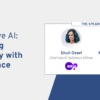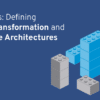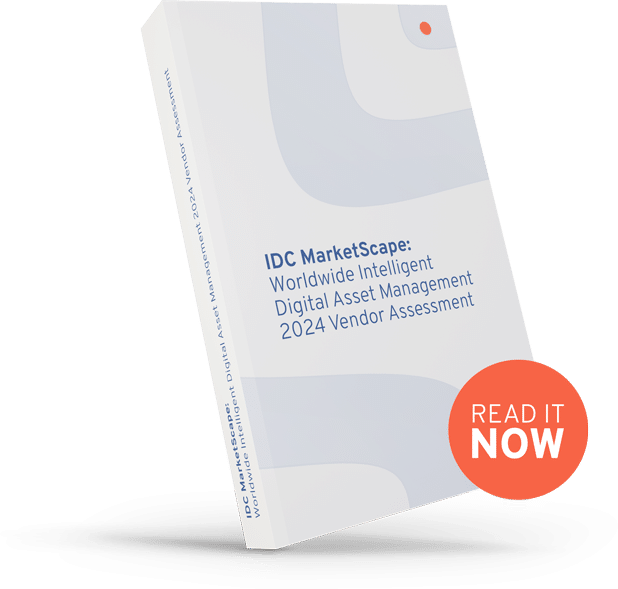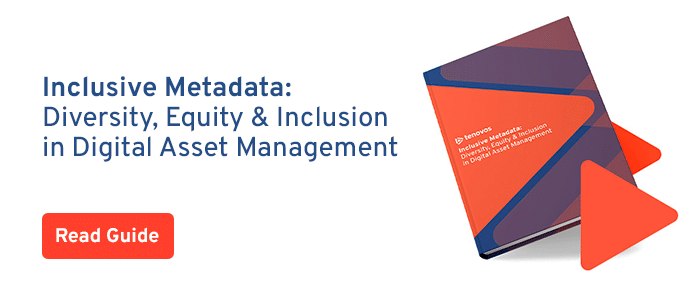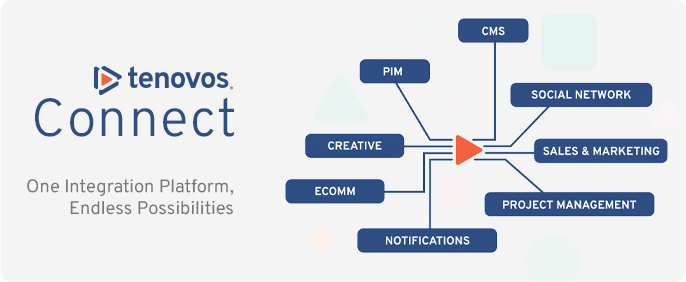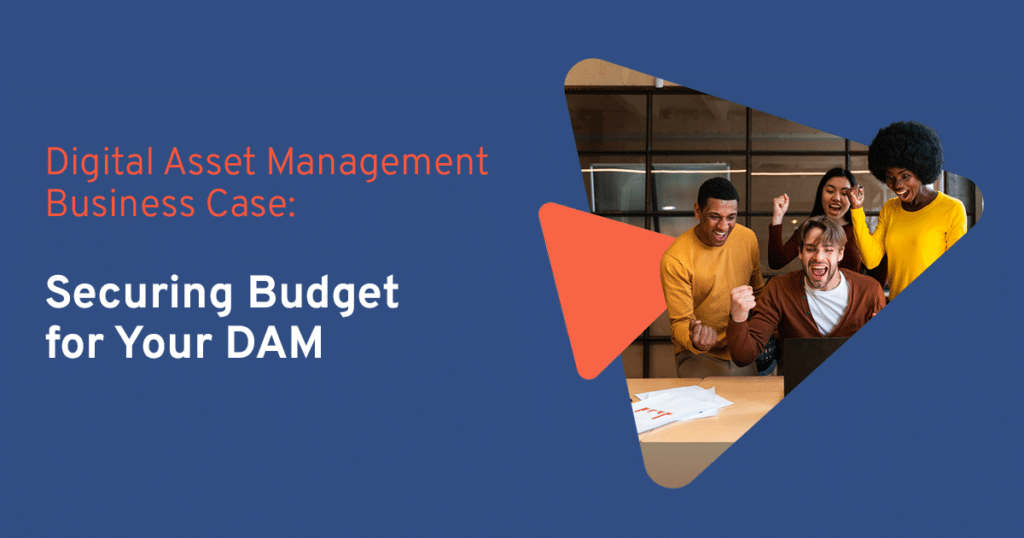

You, like so many other DAM managers out there, are a team of one or few. Every week you’re working hard to add more assets to your digital asset management (DAM) system, improve data quality, and help users, while also being asked to fix another problem, onboard new users, run another audit, or start another project. There is also a laundry list of improvements you want to make, if you can ever find the time.
We know where you are. It constantly feels like there are not enough resources to do the minimum, much less the additional projects you’re tasked with.
The DAM world is evolving: marketing teams need better insights, creatives want faster workflows, and leaders are pushing for higher ROIs. And in some cases, leadership might not always see the immediate value of the DAM, or why you need even more budget to support it. They want to see more impact. It falls on you to deliver, but you can only do so much with limited staffing and budget. Depending on where you are in your DAM journey, you may be in a place where:
- You’ve outgrown your current solution (Dropbox, Box, Google Drive, hard drives, etc)
- Your DAM has launched, but it needs more resources to scale
- Your legacy DAM is no longer meeting the requirement of the business or it can’t scale
When you ask for resources to help solve the problem, it’s crickets. The budget is just not there.
You should know you’re not alone. It can be notoriously difficult for DAM managers to get the budget they’re asking for, because the ROI is not always clear (or easy to calculate).
We’re here to help. No, we can’t give you a magic wand to conjure up a budget that doesn’t exist. But we can certainly help you maximize your chances of getting the ‘yes’ for that next budget pitch you’re making to your leaders.
Trust us: the right planning and execution can turn your frustration into feelings of optimism and empowerment as you convince budget-holders that DAM is worth the ongoing investment.
Here we go.
Understand Your Audience and Stakeholders
As with most projects, everything starts with trying to understand the people (stakeholders) you’re pitching to. Remember, DAM doesn’t exist in a vacuum. It is a service that delivers value to the organization and furthers its strategic aims. Therefore, to make a compelling case, you need to look out, not in. Be able to tell leaders what’s in it for them, while empathizing with the prioritization decisions they have to make.
Start by asking the very basic question: how does the DAM advance my stakeholders’ goals (and what are those things)?
This simple exercise is going to help you consider how the DAM brings value to the people you’re pitching to. Remember, you’re trying to inspire and motivate leaders to support your vision for DAM. To do it, start by understanding theirs.
So, where do you start?
Look to existing resources to understand the priorities of your organization, division, and/or business unit.
- Strategic plans: What are the competitive goals and objectives your organization is setting?What are they committing to achieve?
- Recent communications: Have there been internal or external communications published that provide information on strategic directions for the business?
- People: Can you speak with your leaders, or if they aren’t available, the people that report into them? Try to learn what decisions they are weighing, where they are focusing their energy and resources, and what are their current priorities (or even better, goals or KPIs)
Don’t assume you already know these answers. Goals, priorities, concerns, and stock prices change frequently. What was true last week may not be this week. Taking the time to learn from relevant and timely sources can help you identify opportunities to show value against what’s happening in the company today, and where it’s going.
Once you’ve gone through this exercise, pick the top two or three issues or goals that DAM can help to enable. We’ll focus on those moving forward.
Enable Strategic Goals Through Digital Asset Management
Now that we have our top two or three strategic goals, we need to identify just how exactly the DAM is going to enable those.
It’s not always an easy 1:1 relationship when it comes to how the DAM provides value to a business. You may need to do some thinking here, but here’s an example to help you get your head around it:
By looking at the strategic plan, you’ve identified the business is really pushing to speed up time to market for new products. You know the company is starting to use 3D models as part of the design and production of these products, but that the workflows for these creative assets is less than optimal. Different teams store assets in different locations, and people spend a lot of time looking for specific assets. Then once they find them, they can’t be sure they’ve found the right version. Just by centralizing those 3D assets in the DAM you can immediately save time and money on those processes and help advance that push to speed time to market.
Another example is a company’s new data transparency strategy. The organization wants to ensure that both employees and customers understand what data is collected, stored, and used, and maintain a clear provenance of data collection and use. Because digital assets are part of the organization’s enterprise data set, it can act as a centralized data hub and source of truth for certain classes of data.
Neither of those examples may apply to your specific situation, but you can see how understanding the strategic goals of your organization can help you tie in DAM to those essential projects.
The key is to empathize with the problem, align in your understanding of the goal, and THEN to articulate a solution. Think about using this format to articulate your value proposition pitch:
We know that [goal] is a major priority of [org name], based on [the timely primary resources consulted]. We believe that doing [x, y, z] will help further this goal. Here is specifically what DAM can do: [list, items, here]
Identify Digital Asset Management Cost Savings
Just because you’ve figured out how to tie DAM to strategic projects and goals, that doesn’t mean you’re done yet!
You’re almost guaranteed to be asked how your system is saving the company time and money. And here’s where a lot of DAM managers get tripped up, because there are many ways to answer the question. Ultimately, you want to go beyond saying “DAM increases productivity” or “DAM reduces content spend.” Instead go deeper with details on how and try to quantify wherever possible.
Reducing content spend
Here’s an example for you. One of a creative team’s biggest expenses can be the cost of licensing content from a creator or company like Getty Images. Let’s say your organization also shoots a lot of video content. Some of this was expensive-to-produce footage, shot on location in remote areas. As part of the editing process, we can be generous and say 80% of footage (b-roll and other cuts) are left unused from a given shoot. That doesn’t mean the footage is bad, it just didn’t make the cut for this video. This content is often forgotten about as the creative team moves onto new projects. It is kept—probably on a hard drive on someone’s desk, along with hundreds of others—because the team knows there is potential value there, but it just contributes to the enormous growing backlog that never seems to get tackled.
The next year, the production team is working on a new edit, and that aerial footage that ended up on the cutting room floor last year would be perfect. Unfortunately, no one remembers it, much less knows where it is. They license similar, although far more generic footage, from a stock provider instead – and, this is the same footage they licensed two years ago.
That’s a huge opportunity here for DAM. How much could the company have saved by reusing its own footage instead of re-licensing it? You can easily source that information, and just there you’ve found quantifiable cost savings for the creative team. And as a bonus, you have the opportunity to create higher quality content that is original and on-brand.
The DAM gives you an entire library of images, b-roll footage, and more your company can use in lieu of purchasing stock footage. And these are assets that are created as part of existing projects, meaning you’re helping to not only save your company money on purchasing content, but maximizing the ROI of existing creative/content spend. These are the types of outcomes that make executives happy, and ones you can demonstrate in your digital asset management business case.
Boost efficiency and time savings
Don’t make the mistake of thinking what is obvious to you is obvious to others. In your digital asset management business case, don’t overlook how much time users save by having a centralized content repository optimized for findability.
Your creative teams will tell you that any time they can’t find an asset in the DAM, one of two things will happen:
- They recreate an asset from scratch: see the above section on digital asset management cost savings associated with reducing production and licensing costs.
- They ask someone where to find it: this triggers a chain of events that often leads to the creative waiting days, sometimes weeks for an answer from “the person who knows where everything is,” who may be on PTO this week, or is just too busy to help.
Once they find the asset they are looking for, it will often have no metadata (including critical rights information) associated. That forces them to turn to the legal team, and the wait gets even longer.
So, it’s not an exaggeration to say the DAM can speed up content creation by a factor of weeks. It can also improve the likelihood that your users will find what they are looking for, rather than settling for something familiar and easy to use (but has been used too many times before).
You can get more precise by talking with your creative team to understand on average how much time they are spending (or would spend if they didn’t have a DAM) on finding assets to use. While you’re at it, find out how often they are successful in finding what they’re looking for, how often they have to compromise by using a less compelling or overused asset, or turn to stock once again.
The Cost of Inaction
Sometimes the best way to think about this is not always identifying the benefit of DAM, but calling out the cost of inaction if DAM doesn’t get the investment it needs.
You can go from saying:
“DAM centralizes video assets to make it easier to find and reuse content.”
To something like:
“Reshooting videos next year is going to cost you $10 million, unless you have a DAM to reduce how many reshoots we need.”
Or saying:
“DAM can help protect restricted assets.”
To something like:
“We have experienced several cases of license violations that have cost us $1 million annually the last two years, and which we are budgeting for in the future. Implementing a DAM with strong permissions and usage metadata can protect our media content and reduce our litigation budget.”
It’s a subtle but different way of thinking about the ROI the DAM provides. Sometimes when you’re dealing with budget holders, it can be easier to loosen the purse strings when they see the problem they’re solving first. Spending $200,000 per year to save millions on video reshoots sounds like a no brainer, right?
Need help building a business case for DAM?
Download our free powerpoint template to help you get started.
Calculate the ROI of Your Requested DAM Investment
By now we’ve identified the strategic goals that matter to your stakeholders, budget-holders, and leaders. We’ve also decided what measures (cost savings, time savings, etc.) to use in our business case, and started to collect some initial data. Now it’s time to gather even more quantifiable data, and put it all together to measure or project the ROI of our investment in DAM.
Try to avoid the trap of measuring everything you can think of to maximize the perceived DAM ROI. Instead, stay hyper-focused on the measurements that relate to the strategic priorities you identified in the beginning of this process.
ROI is a pretty simple formula = Return or Benefit / Cost or Investment. Let’s start with the return.
Start by measuring your baselines. What are we doing right now, and how is it performing?
If we’re measuring cost-savings, then we need to know what our costs are right now. If our measure is time savings, we need to measure how much time we’re spending on things right now. If it’s risk mitigation (rights management), how much are we spending on content-related lawsuits today?
The takeaway here is that we can’t calculate the ROI until we understand these baselines.
Now, you may not always have the exact numbers in front of you, but it’s ok to extrapolate a little as long as the multipliers you’re using make sense. Gather as much data as you can, then do some analysis.
For example, you may be able to find out exactly how much the creative team spends on licensing content per campaign. But to find out how much time they spend looking for assets and trying to find out the allowed usage, you may need to take the average time a few designers spend looking for images, multiply that by how many images are needed on average for a campaign (considering multiple distribution channels as well, so each image has multiple versions), and how many campaigns are run each year.
Now use those baselines to set thoughtful projections on how the DAM will impact them, and set and communicate the goals you have for each measurement so leaders know there is accountability on your end.
Next, you will need to have figures on the cost of the investment you want to make, to round out the other side of the equation. You will need to have projected what resources you need, and what the associated costs will be.
When you put it all together, you need to be able to demonstrate that the benefits outweigh the costs.
How to Demonstrate Impact and Make the Case For Funding
This is a lot of data you’ve collected. You run the risk of overloading your audience with information that takes away from the main points you want to make in your pitch.
While each organization is different, often the strongest communication mechanism when addressing leaders and executives is to use a short, streamlined slide deck. You may or may not have the chance to present it, so make sure it can stand alone to get the key messages across at a glance.
Your presentation should clearly describe how the DAM is going to contribute to the organization’s strategic goals. Lead with this so the impact is clear.
A few other tips:
- Know your audience: If they like to have all the data in front of them, consider including an executive summary slide first so they get the key message before diving into the data. Include some compelling, on-brand visuals.
- Demonstrate past impact (optional): If you have already achieved success with the DAM, showcase this! What returns have you already realized? Include a quote from someone who has benefited.
- Demonstrate future impact: Show the benchmark data you’ve pulled and how you anticipate to improve it through the DAM initiative.
- Be succinct: Slide overload will kill your pitch – 5-10 slides should be your target.
- Show your roadmap: let them see your plan, project milestones, different phases, and how you’re going to track progress
Next, be specific about what you’re asking for:
- You need to be prepared to answer questions about digital asset management costs. If your ask is for technology, you need to consider DAM license costs and implementation fees – do some shopping around to get a ballpark figure to use.
- If your ask is for more headcount/resources, you should know what the costs are.
If you aren’t sure about these things, talk to sister organizations – companies in the same industry or of similar size – and ask these community resources what their commitments were/what they spent.
Include what success is going to look like. How are you putting the new budget to use, what is it going to do for the organization/how are you measuring success, and what timeline do you need to achieve those results.
The Power of Storytelling
People love stories. They’re easy to relate to, and can be a compelling way to receive information.
As you’re presenting your data to the leadership team, think about how you can turn it into a story that helps you make your business case. For example, let’s say you’re asking for additional budget to implement a new workflow module in your DAM. Maybe you showcase the lifecycle of the creative process, and walk executives through each step of the process from the perspective of the user, through a specific example that resonates with them. For example, use a common scenario like, “Where can I find the most recent version of our last campaign in Mexico?” Walk the audience through the challenges that this user faces today, then what their experience will be once it is solved — calling out your data points in compelling visuals along the way – in order to demonstrate exactly where your proposed plan will make an impact on productivity and change the story’s outcome.
You can do this on a single slide! It doesn’t have to be complicated – just make sure you’re telling a story with your data that will help contextualize the impact of your proposed project.
Looking for a new DAM? Start with our free RFP template to help you ask the right questions.
Getting Budget for Your DAM
Securing a budget is not easy, but the steps outlined above are going to help you be well-prepared for the pitch. Just be sure you factor in your company’s budget cycles. You want to be prepared ahead of time so you’re ready when the time comes, rather than scrambling at the last minute to get your pitch in.
By the time you’ve gone through this process, you should have:
- Identified strategic priorities for the business that are enabled by DAM
- Documented cost, time, and resource savings generally provided by the DAM to further those strategic aims
- Measured baselines, set benchmarks, and identified goals for success
- Built and (possibly) delivered a pitch deck tailored to the needs of your budget-holders specifically
For help pulling this all together, click here to download a slide deck template that will help you document the details you’ll want to include in your pitch, help you calculate some of the figures that you will want to highlight, and pull together your story. This free tool was developed collaboratively by Tenovos and AVP.
With the new budget you’re going to win, you can start to deliver on the evolving requirements of the business and your stakeholders without the late nights and stress that comes with being understaffed, or saddled with the wrong tool for the job. There’s hope – it just takes the right planning and execution.
About the Author

Kara Van Malssen
Kara Van Malssen is Managing Director for Consulting at AVP, a consultancy focused on helping enterprises maximize the value of their data. As partner and managing director, Kara leads AVP’s consulting team, develops services, and works closely with clients to implement systems that make digital assets easier to access, share, and put to good use.
Kara applies strategic thinking, user experience design, business analysis, and operational design to help organizations develop digital asset and data management solutions that are sustainable, scalable, and deliver value.
She has partnered with dozens of clients in the Fortune 1000, non-profit, and cultural heritage sectors.

